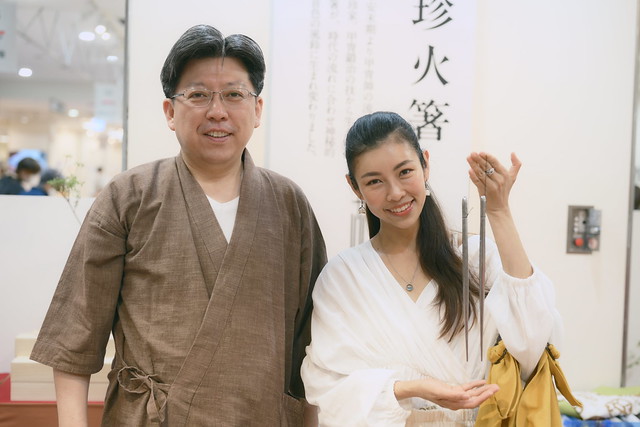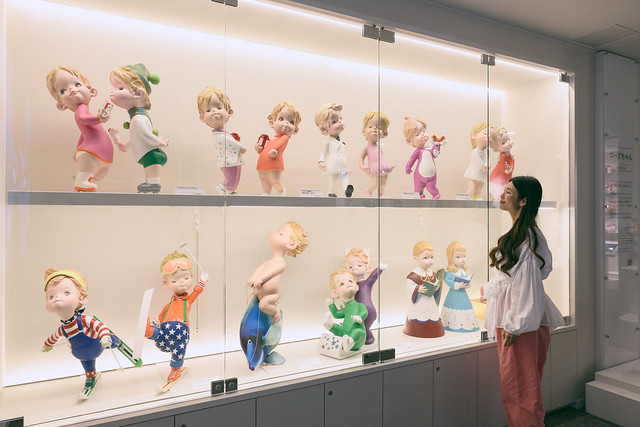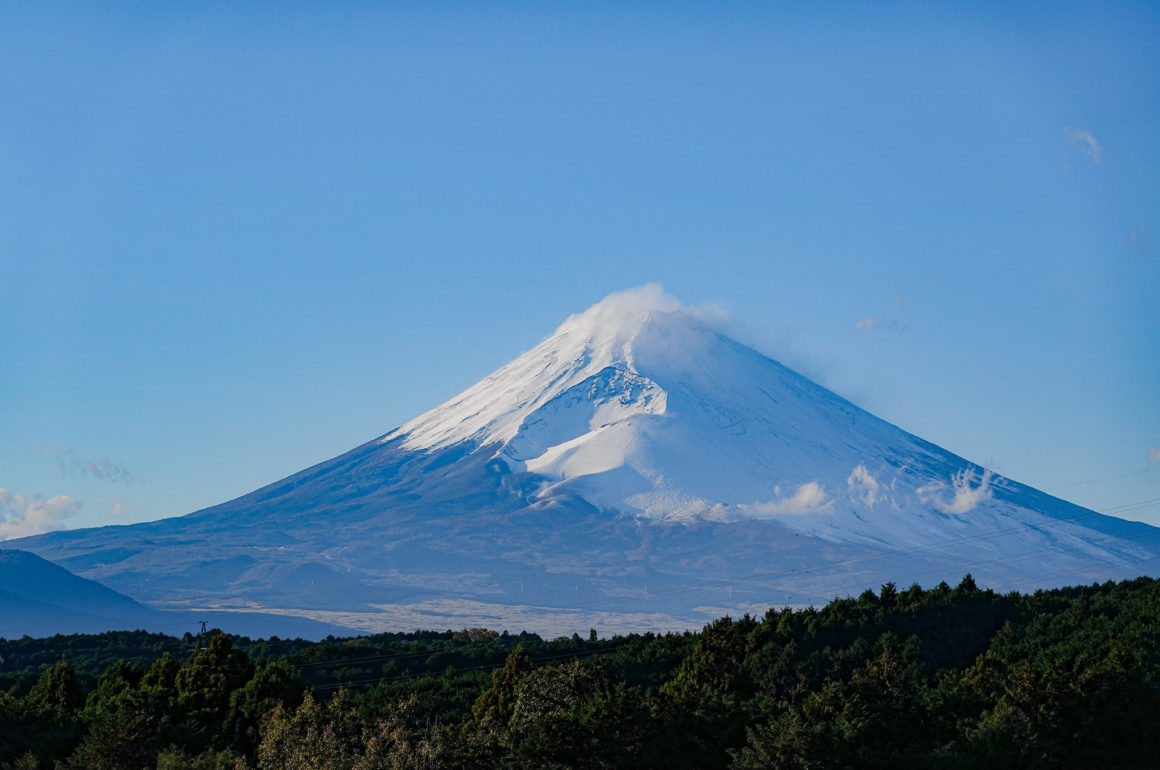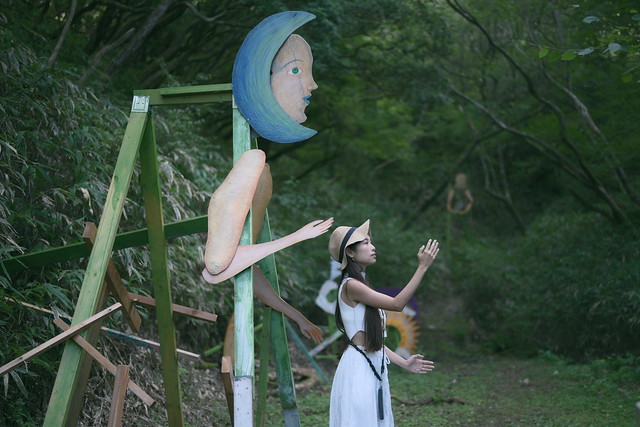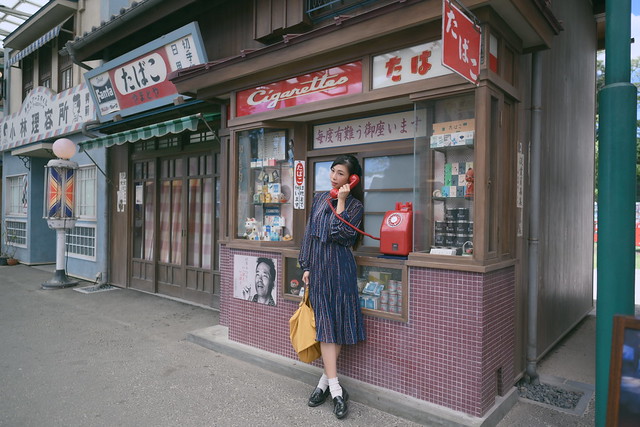
(4000 words. Please pour yourself a cup of tea and some kokusan cookies.)

To detail the entire chronicle of my Yamabushi training at the Dewa Sanzan in Yamagata Prefecture, I probably need to write another book.
But today I will try to make a blog post out of it, for I think that what the holy mountains up in the north of mainland Japan can offer could be a life-transforming experience for many, especially city dwellers of today’s affluent societies who have much of the freedom, but lost. Like I was. Of course, it is also because I have gone so deep into Japan I feel that I am just starting to uncover a hidden treasure trove full of ancient magic. I want to share it with us all, as I always do.
First of all, the burning question for many is, what is Yamabushi? And why did I decide to sign up for something that sounds like nothing but an ordeal?
According to Tim the Kiwi Yamabushi, one of the team members of Yamabushido by Megurun Inc, who helped me make my experience a dream come true, Yamabushi is defined as the mountain dwellers in short. These nature mystics practice “Shugendo” — the way (do) of attaining divine natural powers (gen) through ascetic practices (shu). You could see it like a religion for mountain worshippers of indigenous animism with native Shintoism and later imported Buddhism thrown into the mix, too.

Shugendo has been practiced since ancient times all over Japan, where mountain ascetic hermits would put themselves through rigorous ascetic trainings and self-discipline in search of spiritual enlightenment. Dewa Sanzan, the three sacred peaks of Yamagata Prefecture is home to authentic Yamabushi culture that has thrived since as far back as 1,500 years ago.
My Spiritual Quest

As you may have read in my previous blog posts, I had embarked on a curious journey of exploring realms of spirituality through Japan. I started reading up about zen buddhism, visiting “power spots” in Japan more often than I imagined I would, practicing self-healing and meditation… but something felt missing. Instead of losing myself in this self discovery not knowing where I was heading, I felt like I needed guidance. I found myself on the lookout for spiritual teachers and courses offered, reading up about healing retreats, yoga, even shamanism and ashrams… but nothing quite hit the right spot. They felt distant. I was longing for something close to heart which I could connect deeply with. Something like the spiritual equivalent of daikon… I guess.
That was when I suddenly remembered my cult member, Donny’s article about his Yamabushi experience. It was like picking up that final piece that completes the 3000-piece puzzle.
Native to Japan since time immemorial, Yamabushi Shugendo is exactly it. And immediately I was out to find ways to meet my very own Japan-born Yoda…
Going All In
I contacted Tim, who reserved a space for me to join their 2022 Master’s Training Program. I was told that from the second day of training onwards, participants will not be allowed to speak other than uttering the very one word of essence of the Yamabushi spirit – “Uketamo”. (More on that later.)
Oh… so you mean I don’t have to make heroic efforts to avoid awkward exchanges with strangers? Brilliant. Sign me up. I am the exact person you’ll find at a party pretending to text important messages the whole time so that she can keep looking down at her phone to spare herself from making painful small talks with random strangers.
And the second thing I was told is to leave all my devices, including my phone, camera and even watch behind during the entire training. Honestly this is a little challenging for someone like me who literally make a living out of flirting with modern devices all the time… but I guess it is also exactly why I needed this training so urgently, to remove myself from the comfort of being attached and stuck to them without knowing.
I was all in.
The Preparation
One of the most important things about the training is that you are not supposed to know too much about the training. I guess it’s kinda like how you do not talk about Fight Club. Participants will be given essential information about what to prepare, and that’s pretty much it. You are not even allowed to get to know the people who are joining the trip, and that in itself is also part of the training. Everything is sort of a mystery, which makes it a bit scary and exciting at the same time. Sort of like those Japanese variety shows where they blindfold you and throw you on a desert island and you will be left with a few notes written with instructions. I was pretty sure I didn’t have to scavenge coconut shells and bamboos to build my own escape raft, but who knows…
Prior to the trip, I made the effort to memorize the Heart Sutra (and something nice happened because of it, as I ended up practicing zazen regularly and also attending international sensation monk Yakushiji Kanho‘s concert in Malaysia and met him in person). And I strongly recommend anyone who are joining the Yamabushi Training to at least familiarize yourself with the Heart Sutra because it helps a lot getting in one focused and in tuned during the many prayers done throughout the program.
The Training

A much as I would like to share my entire experience in minute details, and since I always have the tendency to overwrite, it is probably in everyone’s best interest that I leave most of the content of the actual training unspoken. Instead, I will give random recounts of little moments that defined my pilgrimage with the Yamabushi.
In all honestly, the training of Shugendo is definitely not a stroll in the park. While I would spare the details, I think that it is definitely not for the everyday tourist who just wants nice photographs of sceneries and a gastronomy-filled tummy, especially someone who doesn’t already have a burning desire to drastically pivot their life towards a new direction, or in the Yamabushi’s words — to embark on a pilgrimage of rebirth.
However, I think anyone who even bothers to come so far as to subject themselves to unknown ascetic rituals deep in the mountains have to be more or less at the same frequency in terms of being mentally ready.
One who signs up with the Yamabushi Master’s Training will spend 4 days scrambling up steep terrains of all three of the Dewa Sanzan: Mt. Haguro, Mt. Gassan, and Mt. Yudono. On the first day, I checked into a zen temple.
Disconnection at Zen Temple

Something interesting happened during my stay in Zenpoji Temple, where my group of Yamabushi participants stayed the first night. We had breaks in between the activities in the temple, and as I retreated back to my room for a rest, lying on the tatami which was effusing a strangely nostalgic scent, for some reason I had an urge to look under the tsukue (which is like a Japanese equivalent of a coffee table) – the only furniture in the room. I slid myself under the table, and I saw a date written on the underside of the desk. It was the exact year and month I was born in. I intuited that I was led here not by chance, and it prompted a confirmation that this is the exact journey I had to undertake.

With only less than a day spent at Zenpoji Temple, I had developed utmost admiration for the utter dedication of the monks. My most memorable moment was the Shojin Ryori (Buddhist Cuisine) lunch we had together. As much as the Tsuruoka City’s ascetic vegetarian meals are known internationally to be of world class quality, to be completely frank I wasn’t really so looking forward to it being on a mostly animal-based diet. Man I need my meat…

Anyways. We literally learnt how to eat. When I delivered a chopstickful of mountain vegetables into my mouth, closed my eyes, allowing the foreign objects of nature to integrate as one with my body while quietly ruminating the whole process, it felt like for the first time, I understood what food means for human, and was shocked and ashamed at how ignorant I had been, taking food for granted and eating wrong my whole life. When you close your eyes and be fully present, even the blandest food tastes so damn delicious. Also, Tsuruoka City’s Shojin Ryori should be the world standard for vegan food, instead of vague, processed faux burgers.

I continued to marvel at the deep meanings behind every task given to us during our stay at the temple. Won’t spoil any of it for you here, but I had lots of thoughts. The biggest lesson learnt is that the ideal approach to life is to execute every single conduct of our everyday life with reverence and gratitude. And that includes the most trivial things such as, say, picking up the chopsticks or even placing the sheets on your futon. Every single act, with reverence and gratitude. It’s hurtfully obvious, but humans are unsurprisingly forgetful and distracted to say the least.
Master Hoshino

The one thing I looked forward to the most was to meet the Yamabushi Master, or “Sendatsu” in the Yamabushi language – Master Hoshino. I read his book titled “Kanjiru Mama ni Ikinasai“, which was the most profoundly simple book I’ve ever read, and ever since it left an itch deep inside I couldn’t reach and was desperate to scratch.
The first time he appeared in real life in front of my eyes was at the initiation prayer, and when he passed us by, a torrent of overwhelming, inexplicable emotions rushed through my entire body. For the next three days, we were all dressed in “shiroshozoku“, a top to toe white attire that symbolizes the dead, faithfully following our Sendatsu to embark on our pilgrimage of rebirth.

Master Hoshino is 75 this year, and moves like a true Yoda.
Uketamo
One of the biggest challenges for myself joining this training is to embrace the philosophy of “Uketamo”, a phrase unique to Dewa Sanzan’s Yamabushi. Uketamo means “I accept” in plain English, but you probably have guessed that obviously the true meaning stretches far beyond that. I have been unknowingly practicing my own version of Uketamo even before I knew what it was, and I have detailed my thoughts over in this previous blog post: Finding spirituality through Japan. It was the most useful “tool” I have ever discovered to overcome difficult struggles in life, to calm an internal emotional storm, or to expand one’s ability to embrace reality and to love. That was what happened with me and my love for Japan, and why I could love it so fearlessly. The answer was “unconditional acceptance”, which I then realized was exactly the whole essence of Uketamo. We all have dramas of our own at any given time, and I was not spared. I was dying to upgrade my level of Uketamoability as I think that’s the ultimate weapon to equip oneself with in order to sail through life’s ups and downs while retaining inner peace at all time. Right now, I indeed need a lot of Uketamo in my life…

During the training, Master Hoshino does not speak a word, except when he blows the horagai conch and announces the next task. You are also not allowed to speak a single word other than a resounding “Uketamo!” at every of his command. Wake up at the first conch when the skies are still dark? Uketamo. Legs wobbly but Sendatsu shows no sign of slowing down his pace climbing steep slopes? Uketamo. Body drenched in sweat and dirt but not allowed to bathe? U… Uketamo… The first few Uketamos could feel very spartan especially for people who have valued free will (or if I may, “free will”…) their entire adulthood, but slowly you will realize that… little miracles happen when you Uketamo.

For example, I never thought I could complete the spectacular feat of climbing 2446 steps up and down Mt Haguro in a single hike, 2 days in a row (9784 steps in total) despite how shaky my knees were, literally. Uketamo did the job, as well as silently following Master Hoshino’s footsteps, which felt to me almost like a soothing meditation. When the murmuring chatters of the mind dissipated, I found my feet leaping one in front of another like clockwork, despite the hike being probably one of the most strenuous physical activities I’ve ever engaged in. (Context: I am someone who may just faint if I sprint for more than 10 seconds and probably score a fitness level of -10.)
Mt Gassan – The mountain of death
The most emotional moments happened to me near the peak of Mt Gassan — the mountain of the moon — which symbolizes death. It is believed that the spirits of ancestors dwell here, and for centuries, countless of prayers for a peaceful afterlife have been made by pious pilgrims.

From day one, we were blessed with the best weather one can ever asked for. I packed my rain gear and was ready to Uketamo any sort of climate mishaps… but the Weather Kami was beyond kind… as always.
I feel very embarrassed to say this because it sounds like a narcissistic brag, but by now, people around me have somewhat accumulated enough incidents and evidences to establish the sort of, kind of, not really vague assumption that I might, in fact, be a hare-onna (the sun bringer)… Donny the daikon cult member says that he does not even bother checking the weather when he is out with me.
You know how the more people believe in you the smaller and more insecure you feel? What if they are wrong? What if I disappoint them? What if it is just coincidences? What if I am an imposter? WHAT IF I DON’T DESERVE IT ALL?
The last complex played inside of my head, piercing loud. Since a long time ago. Imposter syndrome is real. I am not doing enough for Japan. I don’t deserve Japan. I am not worthy of Japan. There’s no way in this lifetime I can ever make myself worthy of all the things Japan has given me… even though I know that these are just words of the ego, uttered out of the dark shadows of hurt and insecurity it has only ever known since childhood. Like a broken record, they kept replaying.

That day, we woke up at dawn ready to march up Mt Gassan. I saw the signboard at the foot of Mt Gassan. It says: approx. 4 hours to the peak. I gasped and Uketamo-ed silently. For hours… or god knows how long, I just focused on putting one foot in front of another through steep slopes and unstable rocks. It was a sunny day, we encountered occasional hikers jovially basking in the divine majesty of it all. But there was no room for me to even lift my head a split second to look away from Sendatsu’s foot steps because of how intense the climb was…
Until he announced a short break. I put my walking stick down, sat down next to Master Hoshino, looked up and was stunned in frozen gaze upon the boundless expanse of distant mountains that stretched out before us.
I am at a sheer loss for superlatives to express the beauty of it all. Everyone sat down gently in silence. The splendor of the moment so dazzled us that we involuntarily held our breath to be as still as possible lest the divine serenity is broken by our mortal interruptions.
“What a sight. You don’t even get 2 or 3 days as clear as this in the entire summer,” uttered Master Hoshino softly to himself… or at least at particularly no one, suddenly breaking a long, long silence. This was like, the first time he ever let out a comment. The gentle tone of it… the unspoken energy of love and awe behind it… it stroke me deep and hard. Right to the core. Nobody said anything, but I found tears lining my face non stop. Like the cascade of waterfall we meditated in.

Partly because I just felt so, so, so blessed to be one of the very few eyes to witness this miracle. But mostly because… I received it as the divine message from the universe, the kami of Mt Gassan, or whatever the spiritual equivalent is – that it is okay to accept blessings from Japan. That I deserve it too. Otherwise I would not be presented with such privileges over and over again. Nothing is coincidental.
I came here on a Yamabushi training to learn about unconditional acceptance for all the challenges and hardship I face in my life right now and whatever that will come my way. But never once did I think about accepting not just the bad, but the good, too. It’s time to Uketamo the blessings in life, too. Because… is still hard for me to say it… in fact, it feels wrong typing this… but… I deserve it. And I will embrace it unapologetically.

Master Hoshino blew his conch, we continue to march on. And I just cried and cried and cried in silence. On the highest peak of Mt Gassan.
Human = Nature

I have written this in my IG post but here it is again.
In English, we often use phrases like “go out to nature”, or “get closer to nature”, as if nature is a thing we need to seek. In fact, if you Google the English definition of “nature”, you will be told that nature is “the phenomena of the physical world collectively, including plants, animals, the landscape, and other features and products of the earth, as opposed to humans or human creations.”
“自然” (pronounced “Jinen”. “Shizen” in modern days has a westernized meaning) is the native Japanese equivalent to “nature”, but in its definition, humans are, and have always been, included. Yamabushi Shugendo is not “connecting with nature”, but a remembrance of ourselves as part of nature, to be one with nature, just like we always have been since the beginning of time.
As strange as it initially sounded to me, human IS nature. Through Yamabushi training, our bodies remember, that just like our ancient ancestors since the days of yore, we are not separate from nature itself, and that wisdom of life has always been within us. And this remembering can be life-transforming.
Afterthoughts
My first realization was, just how incredibly resilient and instinctive our physical bodies are, once you rid the noisy thoughts of the mind. I was glad that my zazen experiences prior to the training could be practically applied to hiking mountains too. It reminded me of the saying how God will not permit you to be tempted above what you can endure.

Secondly, it dawn upon me how redundant most human inventions are. Phones. Watches. Even torches for the dark nights. We traded our innate intuition for convenience and now we are more lost than ever. Have you ever had days where you wake up just 1 minute before your alarm goes off? It happens so often it is most definitely not coincidental. Many of the Yamabushi participants in my group, during the celebration meal, shared that they too, woke up just a moment before the first conch was blown. This is how spectacular our inner clock and antenna and GPS and radar are. Now I want to practice strengthening my inner Google. Inquire inwards.
Finally, I realized how stillness is so painfully lacking in current societies. Instead of embracing stillness, we try to slaughter it with constant buzz of mindless internal dramas of the ego, or numbing our senses with endless external stimulations. I, being the only child, was one who was especially fearful of stillness as the only way it manifested for me was as loneliness. Same goes for jumping in and out of shitty relationships because we are just so fearful of being alone. But after the 4-day Yamabushi Training, I realized that I may not ever want to talk again while I eat (sorry, all my friends. I promise I’m not bored or being a jerk at you). I will never treat silence as awkward again. I will not subject myself to klutzy small talks just so I could “break the ice”. I will not panic when my work is done and now there’s “nothing for me to do”. I will uketamo the fact that being around people makes me nervous, and that despite how much I desperately crave companion, I am most comfortable when I am alone with myself. And that’s okay.
Come to think about it now, silence has always been greatly valued in traditional Japanese culture. If you are familiar with the “do” (the way) of Japan’s traditions, take sado – tea ceremony – for example, you may have noticed that the entire ritual is conducted in pure silence. It begins with a bow, and ends with a bow. Dialogues are understood without words. How strikingly similar it is to the Yamabushi training, too. I realized how much of our modern verbal communication is redundant, and there’s so much beauty in the unspoken.
Post Training
I did not attain a spiritual enlightenment or grand epiphany of some sort out of my training, but I did have small moments of humble insights that are hard to be put into words.

When the training came to an end, taking off my shiroshozoku robe felt a little like seeing Cinderella’s beautiful blue gown vanish. Obviously I had to return back to civilization and resume my usual life, faced with assorted unresolved challenges waiting for me to Uketamo. Although the opulent dance hall and glamorous horse carriage are no longer here and it was heavy to bid fairy godmothers and Sendatsu Charming goodbye, it feels like a tiny sparkle of magic remains deep inside of me, somewhere. And it feels like it is going to linger for a long time as long as I allow it. Who knows one day it may be fanned into a burning flame of new inspirations.
Joining the Yamabushi

Giving myself the push I so needed to commit to the Masters’s Training was the best gift I’ve given myself of late. Master Hoshino is extremely busy, and his trainings for the Japanese people (conducted in Japanese) get filled up instantly. It’s my destiny to meet him through Megurun’s Yamabushido, run by Tim and Tak who wanted to share a slice of this ancient spirituality and wisdom to those who need it in the world. English translation will be made specially for their international participants, although you really don’t need much of it since the Yamabushi spirit can be felt beyond mere words.
For those who are not ready yet, or simply don’t have the luxury of time for the grand voyage of Master’s Training, know that a 2-day Basic Training Program and the Yamabushi Guided Hike are available too, which are like Uketamo Lite version that is less physically demanding, yet offers similarly intense training encompassing the essence of Yamabushi. Right after my training with Master Hoshino, I dived straight into a guided hike the very next day with Master Hayasaka from another pilgrim lodge, Daishinbo, who showed us the deepest of Mt Haguro while guiding us with his immense Yamabushi spirit. I can’t recommend it enough.
If you are in a similar situation as me, arriving at a curious juncture of self discovery looking for some genuine spiritual guidance through nature, and to strengthen oneself through the practice of acceptance, it is into this meaningful Yamabushi world I invite you to enter.

Say with me again, Uketamo!
PS: If you enjoy this article or find it helpful, it would mean the world if you could help me support Japan by buying a daikon!


